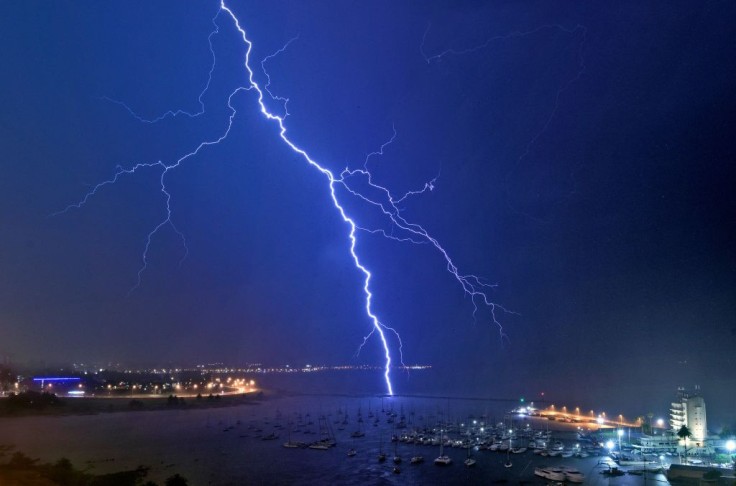
New scientific findings have emerged, revealing the actual factors behind the phenomenon of a lightning bolt that has long spawned many theories.
One is that cosmic rays or space particles crash into electrons inside the thunderstorms and this would cause electron avalanches that boost the electric fields.
But in the new study published in the Geophysical Research Letters journal, scientists discovered what actually causes lightning, a process wherein bolts arise, grow and spread to the ground. In their new research using the Low Frequency Array (LOFAR) network of radio telescopes, violent collisions of ice crystal clusters would shave off electrons from one another. This leads to an imbalance, resulting in a chain reaction among the air molecules that trigger lightning.
Read Also : Astronomers Capture Stunning Image of Black Hole Eruption! How Did They Catch It? How Near Is It to Earth?
The study showed that lightning starts with those ice crystals inside the thundercloud, Quantum Magazine revealed. Turbulent crashes between these needle-shaped crystals brush off electrons, and this leads to having one end of these ice crystals positively charged and the other, negatively charged. Its positively charged end attracts electrons from the air molecules near it. Additional faraway electrons are then drawn to this positively charged end and thus form ribbons of ionized air called streamers that stretch from each crystal tip.
'Streamers' Rip Electrons in Air Molecules, Causing Increased Charges in Ice Crystals Forming a Lightning Bolt
These crystal tips generate a throng of streamers that would branch off repeatedly. These streamers then heat up the surrounding air, thereby tearing electrons apart from the air molecules and causing bigger current flows towards the ice crystals. Eventually, a streamer turns hot and conductive and become a leader, which is a channel wherein a fully fledged lightning bolt could instantly travel.
Researchers showed a video as seen in this tweet on how the lightning flash is initiated. Radio pulses rise exponentially due to the surge of streamers. Once the avalanche of streamers ceases, a lightning leader is formed nearby.
We now know what triggers lightning bolts: ice crystals, not cosmic rays. A radio telescope network in Europe is finally demystifying lightning through detailed observations inside thunderclouds, @thomaslewton reports. https://t.co/IaNzqCIxLO pic.twitter.com/Hm6JShknvP
— Natalie Wolchover (@nattyover) December 20, 2021
The ice crystals' key role, as seen in the study, linked to recent research showing that lightning activity slid by about 10 percent during the first three months of the COVID-19 pandemic in 2020. The scientists pointed this decrease in lightning activity to the lockdowns, which had resulted in fewer pollutants in the air. This causes lesser nucleation sites for ice crystals.
The new research, particularly the provided lightning initiation movie, is expected to provide a framework for accurate lightning models and simulations that were previously unachievable due to lack of high-resolution data.
New Study Only Reveals Lightning Initiation Process, Not Complete Phenomenon
The study described merely the initiation process, which is the initial step of many others before lightning goes to the ground. This only reveals what occurs immediately after the moment ice particles ionize the air. The scientists admits they still haven't discovered how lightning propagates and grows before connecting to the ground. These researchers look forward to finally determine the whole process soon with further study using the LOFAR network.
This initiative would lead to entirely new capabilities that made researchers better understand lightning and improve studies on how to benefit from the once mysterious phenomenon.









